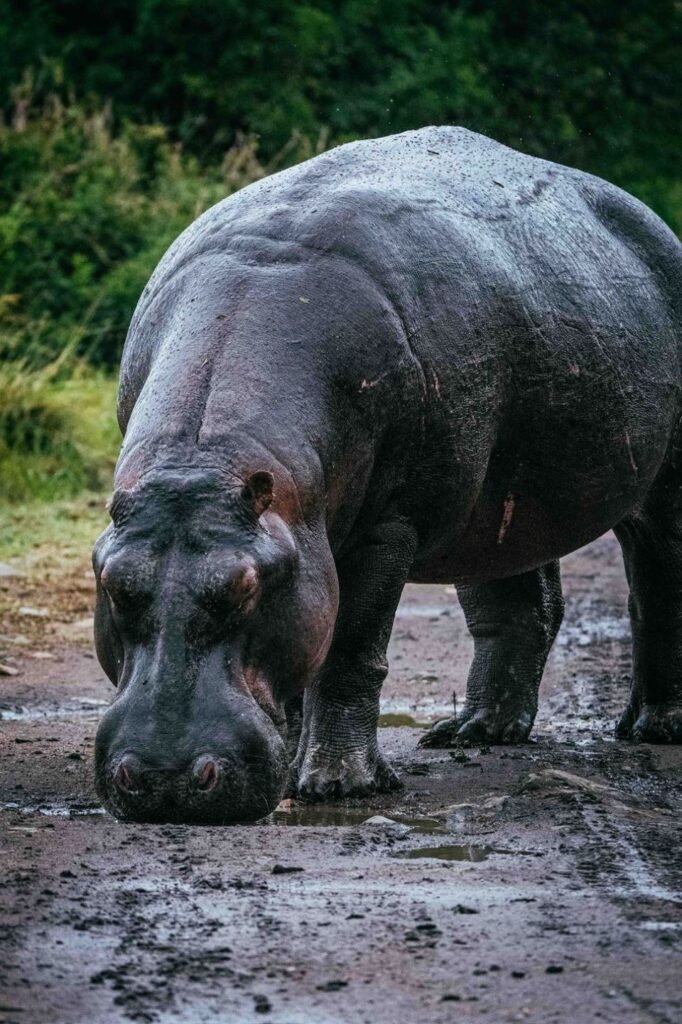
Migori Tarime Cross Border Travel
Migori Tarime Cross Border Travel – For those considering exploring Serengeti National Park from Kenya or Maasai Mara National Reserve from Tanzania, a Kenya to Tanzania and vice versa border transfer is unavoidable. Many times, we’re asked about the border crossing formalities many months in advance or even a year plus before the actual date of arrival.
Our recommendation is usually to visit both, but naturally, this isn’t always feasible considering the amount of time and money required to travel to two different countries. Thus, you’ve come to the correct location if you’re looking to figure out the differences between Kenya and Tanzania and have just a week or two before going on safari.
To many guest, visiting both Kenya and Tanzania during their luxury wildlife safari in East Africa is undoubtedly to witness the The Great Migration takes place in either the Serengeti or Maasai Mara every year. Million-super herds of zebra, antelope, and wildebeest travel hundreds of kilometres in pursuit of good grazing and rain, with the predators following on their trail.
The process of crossing the border from Kenya to Tanzania offers comprehensive guidance on how to get to both countries when on a safari that begins in Tanzania and ends in Kenya or vice versa.
Popular luxury wildlife safari locations for guests arriving from either of the two countries are the Serengeti National Park in northern Tanzania and the Maasai Mara National Reserve in southwest Kenya.
Isebania/Sirare Border Crossing
The Isebania border, which separates Kenya and Tanzania, is located in the southern region of Migori County and the northern portion of Tanzania. This border is frequently utilized to travel between the Maasai Mara National Reserve in Western Kenya and the Serengeti National Park in northern Tanzania. These two locations are well known for the premier wildlife viewing opportunities they provide to the various tourists who visit them annually.
The border between Tanzania and Kenya is located west of the Masai Mara National Reserve. It takes roughly six hours to drive to this crossing location. A few of the customs procedures at the border between Tanzania and Kenya include the need for vehicles travelling from Kenya to Tanzania or Tanzania to Kenya to be registered in both nations before they can cross the border.
- About the Transfer:
This involving transfer between Migori in Kenya and Tarime in Tanzania is the most common route to cross the border for guests traveling between Maasai Mara in Kenya and the Serengeti in Tanzania.
Both points have access to airstrips, which are used to travel to and from the parks in the respective countries and then connected by road for the continuation of the journey should you want to travel by road. Between Kenya and Tanzania, the road border crossing is accessible via the Isebania-Sirari border point.
Please note that the information in this document also applies for the opposite trip (traveling from the Serengeti in Tanzania to Maasai Mara in Kenya).
- The Proposed Drive Itinerary:
- This first stage involves taking a light flight from the park to the respective airstrip in Maasai Mara National Reserves to Migori in Kenya and the same applies for to guests in Serengeti National Park to Tarime in Tanzania.
- Upon landing at the respective airstrip in Migori, Kenya or Tarime, Tanzania a short road drive will follow between Migori and Tarime at the Isebania-Sirari border point.
- After a short transfer by road to either Migori in Kenya or Tarime in Tanzania, you’ll fly from the respective airstrip to your final destination namely, Maasai Mara National Reserve in Kenya or Serengeti National Park in Tanzania.
- Maasai Mara to Migori, Kenya
The flight from Maasai Mara to Migori takes about 40 minutes, depending on how many other stops the plane makes.
Migori/Lichota Airstrip – This is a tarmac airstrip with a small but modern arrivals building with washrooms. Your driver will meet you when your plane lands.
- Migori to Isebania – Sirari Border Crossing – The drive between the Migori airstrip and Isebania-Sirari takes about 30 minutes.
- Isebania – Sirari Border Crossing – This is a one-stop border point. It consists of one building on the border. You will enter the building from Kenya on one side and exit to Tanzania on the other side (or vice-versa).
Your driver will be on standby assist you throughout this process.
Guests need to undergo immigration and customs checks. Both Kenyan and Tanzanian authorities operate at the border to manage these procedures. Passports are required for international travelers, and visas may be needed depending on nationality. Customs inspections ensure that your luggage complies with import and export regulations.
- Requirements and Documentation – You’ll require an e-visa for entry to Kenya, and we recommend getting one for entry to Tanzania as well. We strongly advise that you get this organised in advance. The entry point will need to be specified on the e-visa application – this will be listed as a land border, either Isebania, Kenya or Sirari, Tanzania.
You can get a Tanzanian visa on arrival here (ONLY IF your nationality is eligible), so bring the exact amount of USD cash with you if you need one.
After the border checks you will return to your vehicle and continue with the onward journey.
There are clean and convinient washrooms here if need arises.
A Yellow Fever vaccination certificate check is required if you are crossing from Kenya to Tanzania, but not if you are crossing from Tanzania to Kenya.
- Isebania – Sirari Border Crossing and Tarime Transfer
The drive between Isebania-Sirari and the Tarime airstrip is about 15 minutes and involves a small section of dirt road just before reaching the airstrip.
- Tarime Airstrip
This is a small rural dirt airstrip with minimal amenities: a toilet and some chairs to sit on. Your driver will wait for the plane with you and assist you with boarding.
- Tarime Airstrip – Serengeti National Park
The flight between Tarime and the Serengeti takes approximately 30 minutes, but depends which airstrip in the Serengeti you are heading to/from and how many other stops the plane makes.
For any questions about the border crossing process, contact Oluokos Signature.


Delve deeper with Oluokos Signature into authentic experiences that Migori County has to offer. Migori’s beauty and diversity tunderpins this remarkable ecological hotspot. Each of our activities highlighted in the subsequent sections showcase the unique charm and allure of Migori County, providing tourists with unforgettable experiences rooted in its rich heritage and natural splendor.
1. Ibencho Hills Sanctuary
Ibencho’s story is one of restoration, regeneration and low-impact tourism that changes lives. Protecting biodiversity and securing habitat for wildlife to thrive has been at the core of this ambitious conservation project for over 5 years. Our mission has always been to restore the Ibencho Hills ecosystem to itself. Every night a guest spends with us helps to offset the cost of conservation in our privately protected area while positively impacting those who call the Ibencho Hills home. Please, read more…
2. Muhuru Bay
The little-known and unexplored corner of Kenya is the delightful sandy beaches of Muhuru Bay, a small, picturesque fishing village 42 km west of Migori, located on the shores of the world’s second water body, Lake Victoria. Muhuru Bay is resposeful mosaic of rolling hills, rocky outcrops, gigantic granite boulders and beautiful views of Lake Victoria that kisses the horizon. Lake Victoria serene waters and distant islands that seem to be floating while creating a scenic setting with several miles of white sands is a haven for guests who seek some quite moments.
3. Thimlich Ohinga
If your time permits, a tour of the archaeological site would be a rich learning experience of the lifestyle, the myths, and the folklore of the local Luo community that have been passed down from generation to generation. Thimlich Ohinga literally means a frighteningly dense forest in Luo, a Nilotic group who predominantly occupy the region. Thimlich Ohinga is the largest and best preserved of these traditional enclosures found in the Lake Victoria region. It is also an exceptional example of the tradition of massive dry-stone walled enclosures, typical of the first pastoral communities in the lake basin, which persisted from the 16th to the mid-20th century.
4. Lake Victoria
Our preferred spot on Lake Victoria is a principal destination for locals and visitors alike. Its serene landscapes, fishing heritage, and close-knit community make it a unique place to visit. It lies between the peninsulas of Muhuru Bay in the south and Karungu in the north, giving the area a unique landscape perspective. The beaches are clean with picturesque white sandy beaches. Thanks to its verdant mainland beaches, Lake Victoria is a birders haven rich in birdlife, with species like cormorants and kingfishers commonly spotted.
A walk on the beach, especially at sunset, is quite relaxing, and a wonderful workout. The bay is also home to various fish species, which play a crucial role in the local biodiversity. Despite facing challenges such as infrastructural limitations, investor aversion, and insufficient marketing, Lake Victoria continues to thrive as a vibrant leisure hub with a promising future for sustainable tourism.
5. Racing Towards a Greener Future
Macalder Gold Mines is a mining site located in the Macalder area of Migori, Kenya. These mines have a history of gold mining activity dating back several decades. The area gained prominence during the colonial era when the British explored and exploited gold resources in various parts of Kenya. A visit to Macalder for a glimpse of how small-scale artisan gold mining happens. The 90-km2 Macalder Mines, part of the broader Lake Victoria Greenstone Belt, sometimes known as the Migori Gold Belt. Since its inceptions, over decades, been underexploited by artisan miners using only traditional ball-mill method. It is apparent on arrival at Macalder Mines that gold mining has forever changed the landscape of this area, carving deep clefts, creating artificial hillocks, and a mishmash of spectral red pools of acid.
Explore Migori, Kenya's Last Frontier with Oluokos Signature
Though not well known, Migori County is a vibrant region located in the southwestern part of Kenya, bordered by the shores of Lake Victoria to the south and the Serengeti plains to the west. This strategic geographical position makes Migori a gateway to both natural beauty and diverse cultural landscapes. With its verdant rolling hills, expansive agricultural fields, and rich biodiversity alongside a picturesque backdrop for both residents and visitors alike.
Migori tourist attractions include the well-known Thim Lich Ohinga Ruins which is a protected UNESCO world heritage site and makes a perfect stop over for guests on their way to or from Ruma Park and Maasai Mara National Game Reserve. Discover the lush Gogo Falls and the alluring Macalder Gold Mines before exploring the expansive sandy beaches on Lake Victoria and the famous Migingo archipelago.





We’re your tailor-made African luxury holiday outfitter. We’re an independently-owned and ethically run operator specializing in luxury life-changing luxury holidays in eastern and central Africa. At Oluokos Signature, we pride ourselves on being the leaders in customer service and we only aim at delivering the best to our discerning guests.
Whether taking in the exciting geological sceneries or exploring the fascinating tribes and communities along dazzling and endless waters of Lake Victoria, the cultural diversity found in Migori County is one of its most significant attributes. It is home to several ethnic communities, including the Luo, Abagusii, and various migrant communities, each contributing to the rich tapestry of local traditions, languages, and customs. This diverse heritage fosters a sense of unity while also showcasing distinct cultural practices, festivals, and culinary delights that reflect the area’s unique identity. Such cultural richness offers an authentic experience to visitors, allowing them to immerse themselves in the local way of life.





